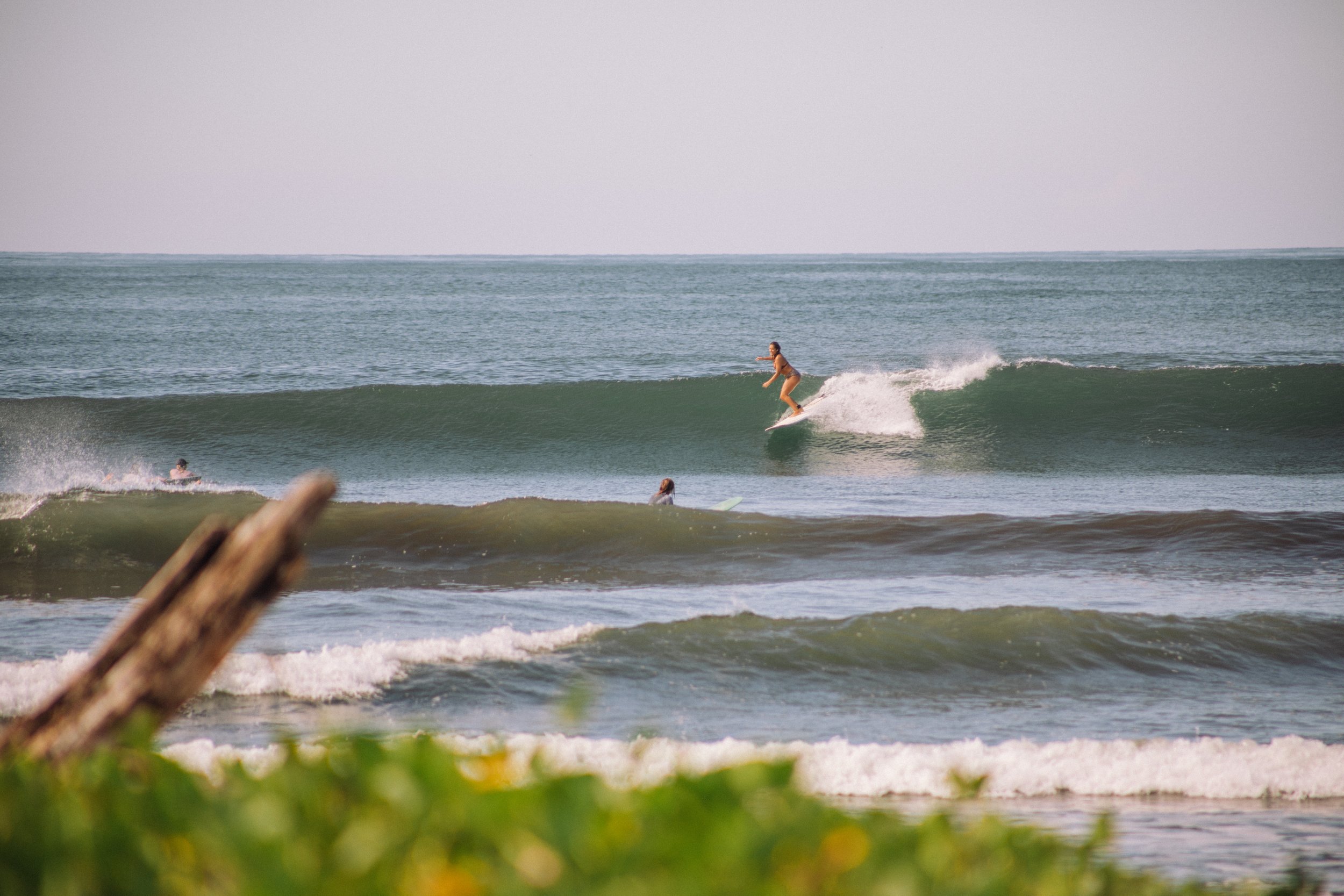Everything You Need to Know About Nicaragua Surf Seasons
In Northern Nicaragua, we’re blessed with year-round world-class surf. Surfing, living, and traveling in Nicaragua are dictated by the seasons, but not the same seasons that you may be accustomed to in the United States or Europe. Instead of winter, spring, summer, and fall, in Nicaragua, there are two seasons—the dry season and the rainy season. For most travelers in Nicaragua and throughout Central America, the dry season is the “high season,” where tourist flock to the beaches to escape the harsh winters of their home countries. For surfers, the rainy season coincides with summer south swells and is considered the unofficial surf trip season of Central America. Whether you’re planning a Nicaragua surf trip for the rainy or dry season, you’re sure to score uncrowded waves in Northern Nicaragua. Continue reading below for Everything You Need to Know About Nicaragua Surf Seasons.
Nicaragua Dry Season Weather
In Nicaragua, the dry season falls from October to April. During the dry season, we experience cloudless blue skies and mild winds with temperatures hovering around the mid-80s to low 90s°F (29-33°C). During the dry season, we spend most of our time cooling off in the surf or lounging by the pool. Whether the weather is slightly hotter than the rainy season, it’s easy to find shade or cool off in the water.
Northern Nicaragua Surf During the Dry Season
While the dry season isn’t considered the “swell season” like the rainy season, we still see plenty of swell. With fun-sized waves and light, optimal winds, the dry season in Northern Nicaragua is ideal for surfers of all levels. New surfers can surf gentle, beginner-friendly waves, while experienced surfers can enjoy medium-sized swell at a variety of our favorite breaks.
Nicaragua Rainy Season Weather
The rainy season in Nicaragua falls from May to September and is typically considered the low tourism season in Central America. Those unfamiliar with the weather in the tropics may assume that rainy season days are full of constant downpours. In reality, the rainy season sees one or two periods of rain a day broken apart by tropical, sunny skies. Seasonal rain can last anywhere from one hour to several hours. Most heavy rains occur at night. After the rain, the weather is nice and cool, the waves are often glassy, and we relish the cloud coverage while it lasts.
Northern Nicaragua Surf During the Rainy Season
For surfers, the rainy season is the preferred time of travel. The rainy season in Nicaragua is full of significant swell events. While our favorite world-class wave, the Boom, prefers small to medium-sized swells, plenty of the area’s points and river mouth waves come to life during large swell events. If you’re traveling to surf Nicaragua during the rainy season, you’re going to score. In Northern Nicaragua, there’s no need to track swells and pull the trigger on last-minute flights to score the Boom. The Boom always breaks unless the swell is too big. During large swells, we take our advanced surfers by boat and car to our favorite point breaks and river mouth waves that can hold serious size. For beginner and intermediate surfers, our home break down the stairs from our Nicaragua surf resort offers a sheltered cove where the waves break at user-friendly heights.
Northern Nicaragua Surf During Shoulder Season
Traditionally, the shoulder season months of March and October see a dramatic shift in weather that is usually accompanied by unpredictable winds and heavy rains. In the last few years, we’ve had a surprising amount of solid swell and favorable winds during the shoulder season. While we still see the dramatic shift in weather, we’ve had glassy mornings with plenty of swell. We’re lucky to have multiple waves to surf near our Nicaragua surf resort that work in varying conditions.
If you’re ready to book the surf trip of a lifetime, head to our website. Stay tuned to our blog to learn more about our Nicaragua surf resort, our favorite waves, and our community at Amaru.





